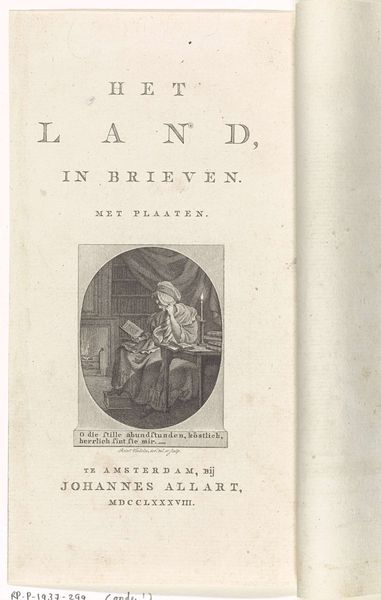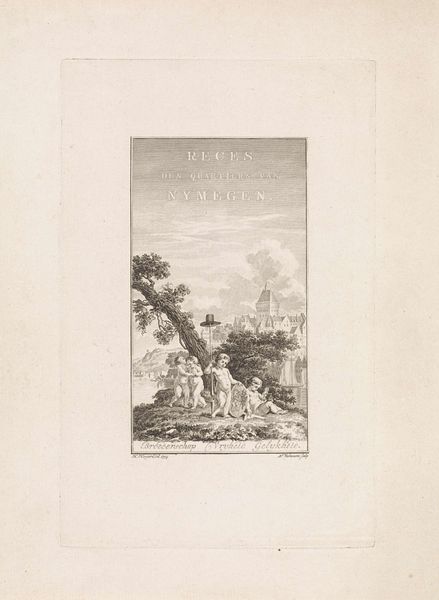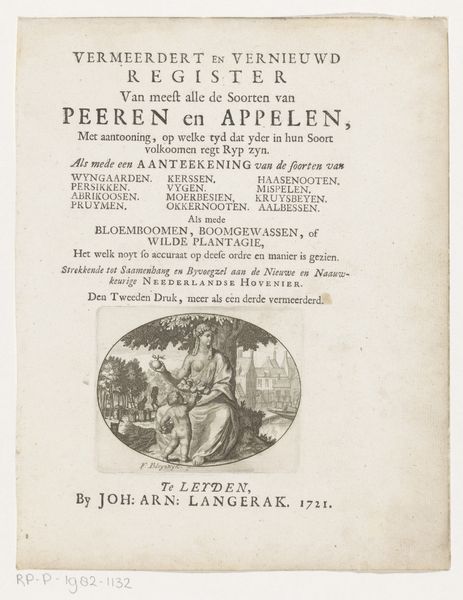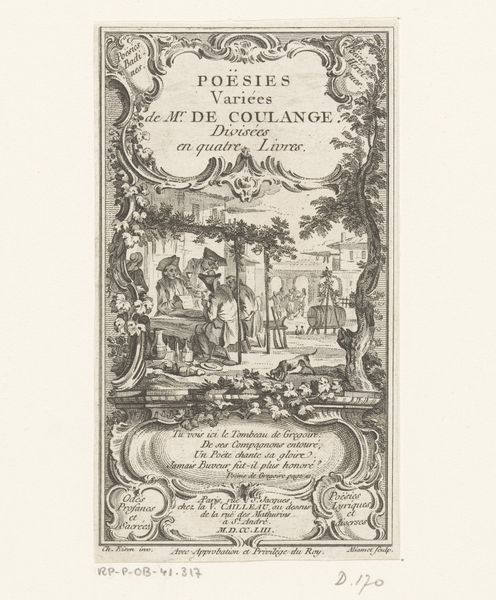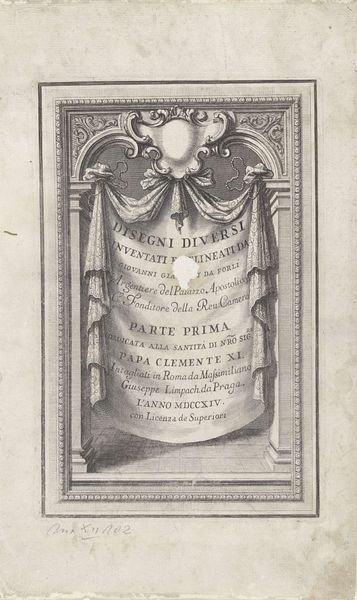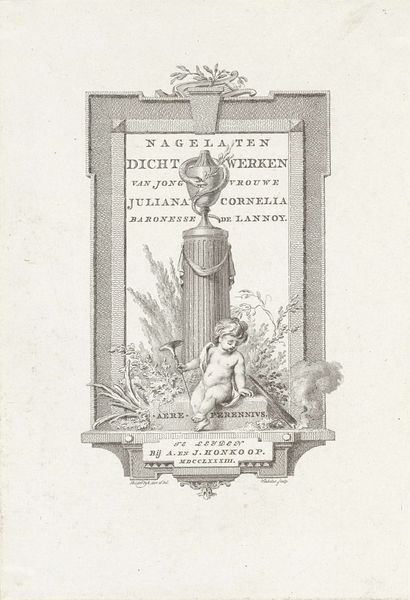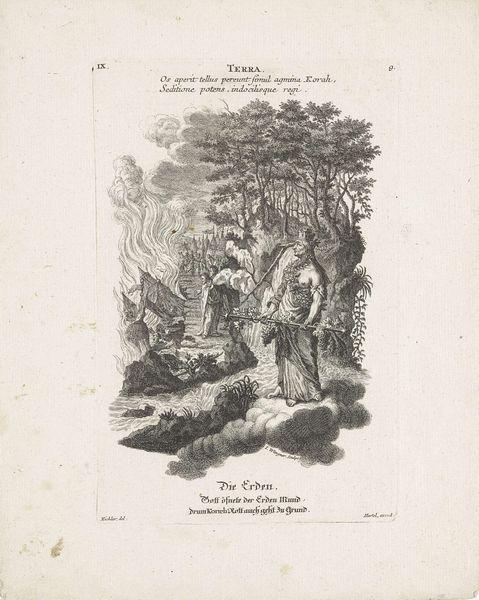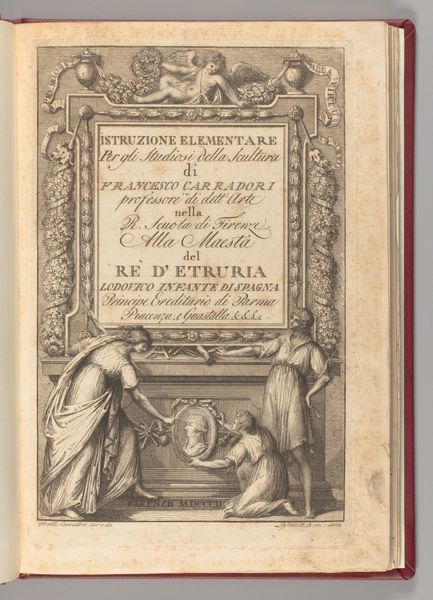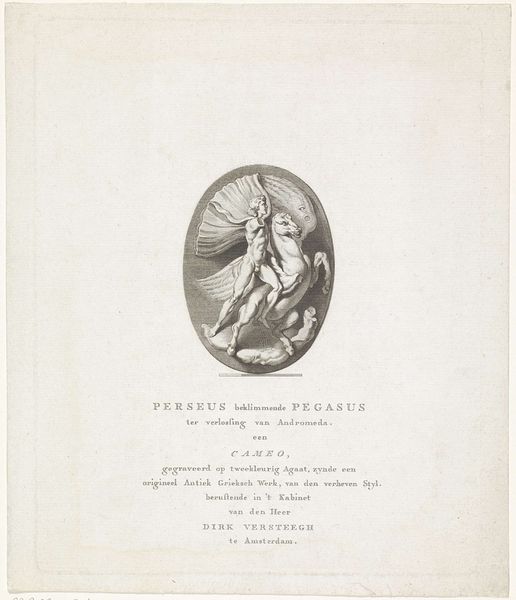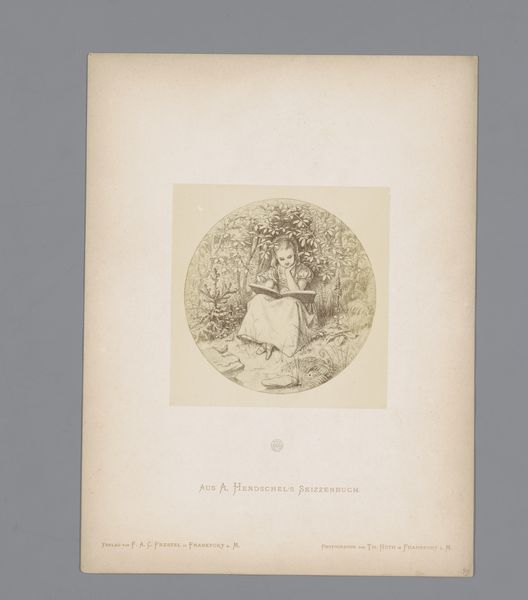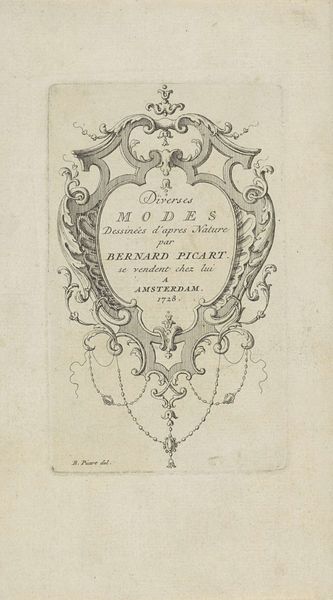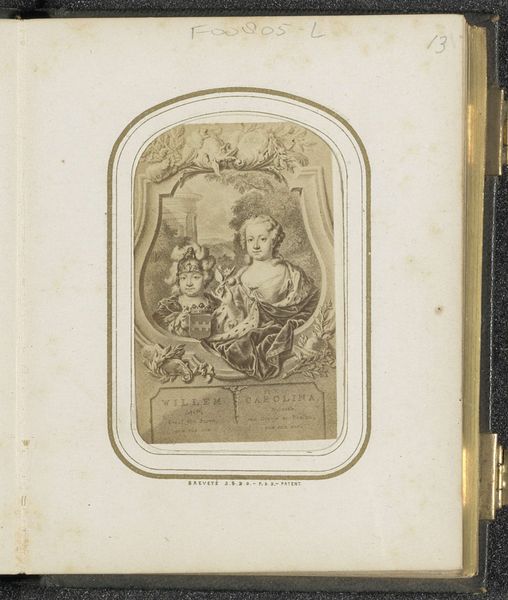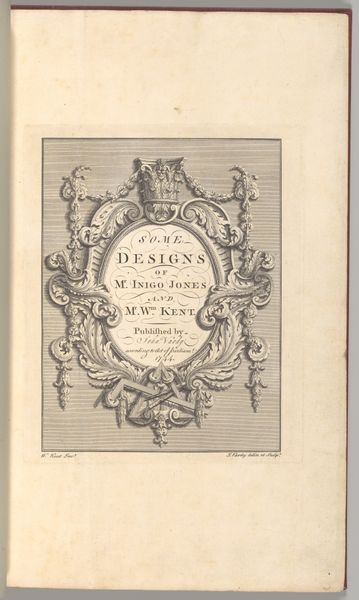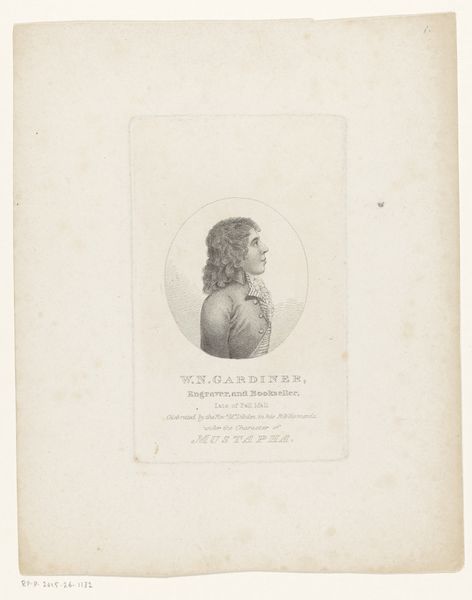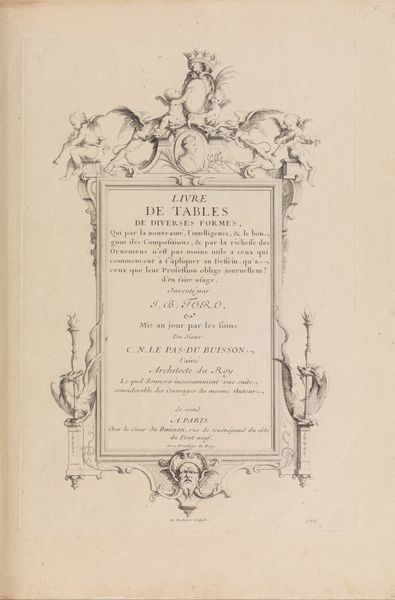
Titelpagina voor: Elisabeth Maria Post, Reinhart, of Natuur en Godsdienst, dl. 1, 1791 1791
0:00
0:00
print, engraving
#
portrait
#
neoclacissism
#
aged paper
# print
#
light coloured
#
old engraving style
#
landscape
#
genre-painting
#
engraving
#
historical font
Dimensions: height 237 mm, width 155 mm
Copyright: Rijks Museum: Open Domain
Curator: Looking at this print, I immediately get a sense of idyllic tranquility. The soft light and pastoral setting really draw me in. Editor: This is the title page designed by Reinier Vinkeles for Elisabeth Maria Post's "Reinhart, of Natuur en Godsdienst," published in 1791. Vinkeles was a prominent engraver, and this work exemplifies the Neoclassical style that was very popular at the time, particularly among intellectual circles engaged in discourses about civic virtue and Enlightenment values. Curator: Neoclassical certainly! It has a serenity that I can't ignore, almost as if extracted from a classic myth. Notice the shepherdess beneath the tree, she is accompanied by her flock. She is quietly writing in a book—such a direct symbol of knowledge. Is she an allegorical figure, would you say? Editor: Absolutely, I believe that it encapsulates the 18th-century desire to connect the natural world with faith, represented here by the book she is writing. She's literally inscribing herself into nature, or perhaps transcribing nature into herself. Nature and religion! Curator: Yes! I like that; the overt symbols of faith and the bucolic are very powerful and very typical, although quite obvious now. This image is also part of a larger political discussion from the Enlightenment regarding morality and virtue, I suppose? How public figures must appear and perform to maintain moral credibility. Editor: Precisely. Remember, during the late 18th century, print culture became increasingly important, particularly in the Dutch Republic, for disseminating philosophical and political ideas. Visual imagery like this wasn't just decorative. It served a pedagogical role as well. Curator: Looking at the image’s reception then becomes more about how those Enlightenment ideas translated, literally and figuratively, into the political consciousness of the Dutch population. Was this shepherdess idealized, attainable, believable, and virtuous for the readers who bought the book? What an interesting question! Editor: An essential question indeed. The image encourages us to question how morality gets aestheticized. Perhaps its enduring resonance lies in its simplicity, reminding us to constantly question our understanding of symbols in broader cultural narratives. Curator: A potent mix of philosophy and visual metaphor—making it more than just a book cover. Editor: A little snapshot into a world of profound significance.
Comments
No comments
Be the first to comment and join the conversation on the ultimate creative platform.
